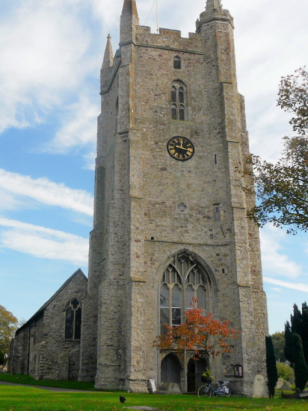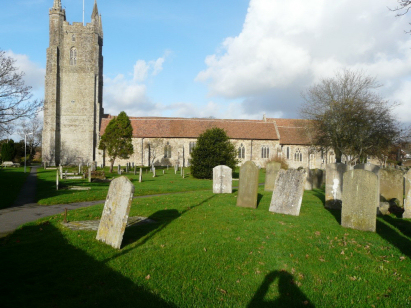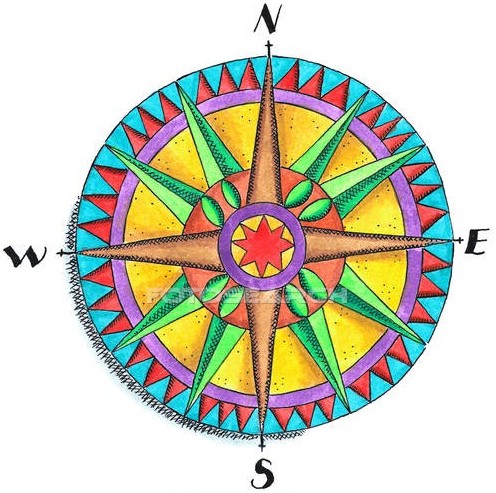
England
& Wales Hardwicke Marriage Index
Marriages
1754 - 1837
Lydd All Saints
 |
England
& Wales Hardwicke Marriage Index |
The ParishThe parish of Lydd is the southernmost parish in Kent forming a lengthy stretch of the county's English Channel coastline. Lydd is located roughly 3 miles south of the town of New Romney and 8 miles east of the Sussex market town of Rye. Lydd sits at the southern terminus of the B2075 which connects Lydd with the A259 (Rye to Hythe) road. Lydd is described in early gazetteers as "a decayed market town", its fate sealed in 1287 when the course of the River Rother shifted to Rye as a result of a major storm leaving it isolated within the Dungeness peninsula. Early documents mention Lydd as early as the 8th century and it was granted its market by Edward I and in early medieval times was a major market town and port. Lydd has a roughly triangular shape expanding towards it southwestern end with modern developments associated with the appropriation of land for military purposes, much of the land southwest of the town being marked on maps as a "danger area". The parish incorporates extensive tracts of grazing marsh at the southernmost extremity of Romney Marsh allowing extensive grazing for the iconic sheep of the marsh, however, much of the parish sits beneath the vast shingle area of Dungeness and is unsuitable for any farming use. This apparent uselessness has lent itself to many modern developments, a motor racing circuit, an airport (from which the first commercial cross-channel flights once left for Le Touquet carrying the brave and wealthy in the earliest days of aviation) and more controversially a nuclear power station. Amongst all of the paraphernalia Dungeness is a National Nature Reserve for its rare plants and home to a large RSPB bird reserve as well as a quirky community of makeshift properties at Lydd-on-Sea. Lydd is drained southwestwards by man-made "sewers" as the locals tern drainage ditches and channels, most water making its way to the English Channel via Jury's Gut Sewer. Lydd is sited at between sea level and 5 metres and there is nothing higher for many miles in a flat marshland landscape. Lydd parish is the largest in its county covering 6,700 acres and supporting a population of around 1,500 parishioners. Domesday records do not show an entry for Lydd rather 2 manors, Langport and Denge Marsh, lie within the bounds of the parish and Langport illustrates the downfall of the former market town, it held 220 households and sat comfortably in the top 20% of settlements in the land. Langport offered 19 ploughs, a meadow, 4 mills and 7 salthouses for its holders Canterbury Abbey whilst Denge Marsh, held by Bishop Odo of Bayeux, contributed a further 7 ploughs. |
 |
|
|

|
| Register No | Covering Dates | Deposited With | Register Style | Quality Standard | Comments |
| 1 |
14th August 1754 - 19th July 1812 |
Kent Archives & Local History - Reference -
P237/1/A/2a |
Standard preprinted and self-numbered combined Banns &
Marriage register with 4 entries per page |
Grade 3 Register - there are sufficient quality issues with this register to indicate that some misreads will occur albeit few in number | The later stages of this register are written in a rather
poor hand which may result in one or two misreads NB this register is bound together with preprinted Baptismal & Burials registers and its successor into a single archival deposit |
| 2 | 7th April 1813 - 14th February 1837 | Kent Archives & Local History - Reference - P237/1/A/2b | Standard Rose style preprinted and prenumbered Marriage register | Grade 2 Register - not a perfect read but with a low likelihood of
misreads |
None NB This register is bound together with its predecessor and other registers into a single archival deposit |
|
Old
Romney St Clement
|
Old
Romney St Clement
New Romney St Nicholas |
|
|
Old
Romney St Clement
|
 |
|
|
|
|
|
1760 1770 1780 1790 1800 1810 1820 1830
Corrections to Tinstaafl Transcripts